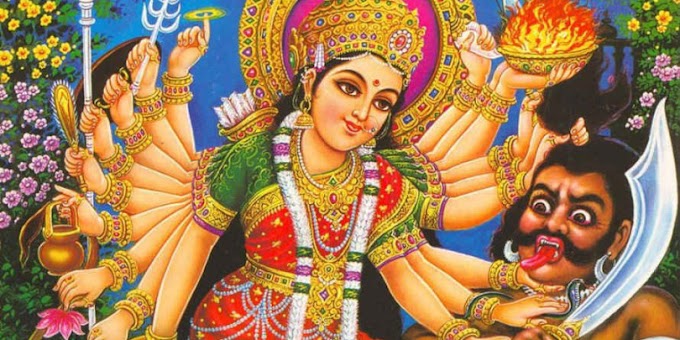The temple has a long and complex history, with the original structure believed to have been built in the 11th century. It has been destroyed and rebuilt several times, with the current structure dating back to the 18th century.
The temple has been the site of many significant events in Indian history, including the destruction of the original temple by the Mughal Emperor Aurangzeb in the 17th century and the reconstruction of the current temple by the Maratha ruler, Ahilyabai Holkar, in the 18th century.
Today, the Kashi Vishwanath Temple is a popular pilgrimage site for Hindus and attracts millions of visitors each year.
Deities of Kashi Vishwanath Temple
The main deity of the Kashi Vishwanath Temple in Varanasi is Lord Shiva, who is worshipped in the form of a lingam. The lingam is believed to represent the cosmic energy and creative power of Lord Shiva.
In addition to Lord Shiva, the temple also has several other deities, including Lord Ganesha, Goddess Parvati, Lord Kartikeya, and Nandi (the bull), who is considered to be Lord Shiva's mount.
There are also several smaller shrines within the temple complex dedicated to various gods and goddesses, including Lord Vishnu, Lord Hanuman, and Lord Rama.
The temple complex also houses the Jnana Vapi well, which is believed to be connected to the Ganges river and is considered to be one of the most sacred sites within the temple complex.
In addition to Lord Shiva, the temple also has several other deities, including Lord Ganesha, Goddess Parvati, Lord Kartikeya, and Nandi (the bull), who is considered to be Lord Shiva's mount.
There are also several smaller shrines within the temple complex dedicated to various gods and goddesses, including Lord Vishnu, Lord Hanuman, and Lord Rama.
The temple complex also houses the Jnana Vapi well, which is believed to be connected to the Ganges river and is considered to be one of the most sacred sites within the temple complex.
Puja timing Kashi Vishwanath Temple
The Kashi Vishwanath Temple in Varanasi has specific timings for performing puja and other rituals. The temple opens early in the morning, and the first puja of the day, known as the Mangala Aarti, is performed at 3:00 AM.The Shringara Aarti, which is performed to adorn the deity with flowers and other decorations, takes place at 9:00 AM. The temple remains open throughout the day for darshan (viewing of the deity) and various other pujas and rituals.
The Sandhya Aarti, performed during sunset, takes place at 7:00 PM. The temple is closed to visitors from 9:00 PM until the next morning, when the Mangala Aarti is once again performed.
It's important to note that the timings and schedule of pujas and rituals may vary on special occasions, festivals, and other important days, so it's best to check with the temple authorities or the temple website for the most up-to-date information.
Significance of the Vishwanath Temple
The Kashi Vishwanath Temple is one of the most important and revered Hindu temples in India, and it holds significant religious and cultural significance for Hindus around the world. Here are some of the main aspects of its significance:
- Historical Significance: The temple has a long and complex history, dating back to the 11th century. It has been destroyed and rebuilt several times, with the current structure dating back to the 18th century. The temple has been the site of many significant events in Indian history, including the destruction of the original temple by the Mughal Emperor Aurangzeb and the reconstruction of the current temple by the Maratha ruler, Ahilyabai Holkar.
- Spiritual Significance: The Kashi Vishwanath Temple is dedicated to Lord Shiva, who is one of the most important deities in the Hindu pantheon. The temple is believed to be one of the 12 Jyotirlingas, which are considered to be the most sacred abodes of Lord Shiva.
- Cultural Significance: The Kashi Vishwanath Temple is located in Varanasi, which is one of the oldest living cities in the world and a major center of learning, art, and culture in India. The temple and the city are closely associated with the Hindu way of life and have been a source of inspiration for poets, musicians, and artists for centuries.
- Pilgrimage Significance: The Kashi Vishwanath Temple is a major pilgrimage site for Hindus, and it attracts millions of visitors each year. Pilgrims visit the temple to seek the blessings of Lord Shiva, perform pujas, and offer prayers and offerings. It is believed that a visit to the temple can grant spiritual and material benefits, and can help one attain moksha or liberation from the cycle of birth and death.
How to go Varanasi to Kashi Vishwanath Temple
Varanasi is well-connected to major cities in India and can be reached by various modes of transportation.
- By Air: The nearest airport to Varanasi is Lal Bahadur Shastri International Airport, which is located approximately 25 km away from the Kashi Vishwanath Temple. From the airport, one can hire a taxi or take a pre-paid taxi to reach the temple.
- By Train: Varanasi has its own railway station, which is well-connected to major cities in India. From the railway station, one can hire a taxi or take an auto-rickshaw to reach the temple.
- By Road: Varanasi is well-connected by road to major cities in India, and there are several state-run and private buses that operate to and from Varanasi. One can also hire a taxi or drive to the Kashi Vishwanath Temple.
Once you reach the temple area, it's important to note that the temple is located in a crowded and narrow lane, and vehicular traffic is not allowed in the immediate vicinity of the temple. Visitors will need to park their vehicles in designated areas and walk to the temple.
You May Like Also Also Like This




.jpg)





0 Comments